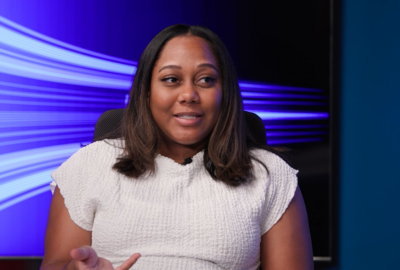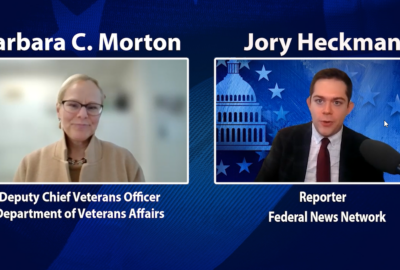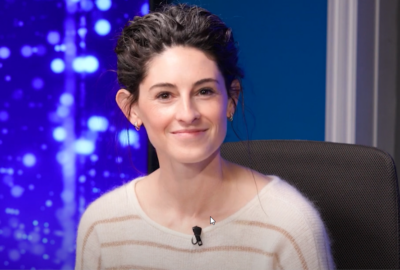Sponsored by Carahsoft
TSA sees higher passenger satisfaction scores as ‘huge testament’ to frontline workforce
TSA is focused on improving its customer experience, at a time when it’s seeing a record volume of interactions with the public.
The Transportation Security Administration (TSA) is focused on improving its customer experience, at a time when it’s seeing a record volume of interactions with the public.
TSA screens over 2 million passengers every single day at airports across the country. Agency officials recognize people can grow frustrated with the airport security process, but are seeing higher satisfaction scores.
Niki French, TSA’s customer service branch manager, said the agency faces a balancing act between customer experience and security.
“A lot of times TSA can, unfortunately, be seen as standing between you and your vacation. It’s something that you have to go through. It’s a security process, so it’s not necessarily a good time,” French said.
The Department of Homeland Security interacts with more Americans every day than any other federal agency.
“Not all high-impact services are the same … particularly those in the realm of security; not everybody’s thrilled with that experience,” said Rachel Schwind, customer service branch support at TSA and director at ASI government. “I think the Department of Homeland Security, in general, has that challenge, but it is something that TSA is really passionate about.
TSA, as a high-impact service provider (HISP), is taking steps to improve the security screening process, as part of a DHS-wide effort to reduce administrative burden.
While the work of HISPs varies considerably across the federal government, Schwind said they often follow a similar approach to CX improvements.
“What’s nice about being designated as a HISP, is that it creates that structure that allows them to do the work that they were already passionate about doing in the first place,” she said. “But there’s an avenue to communicate that to the public, in a way that doesn’t create a burden for them. And there’s a way to organize how the agency collects that information, and shares that across.”
TSA sees higher passenger satisfaction scores
TSA conducted a passenger stakeholder survey in 2023, following up on a survey conducted in 2019, to track how individuals traveling through airports rated the experience of going through security.
The survey, conducted at 16 airports across the country, sought passenger feedback on confidence and trust in the security screen, their satisfaction with the process and their rating of the professionalism of transportation security officers.
The survey found that 94% of people are confident in TSA officers to keep air travel safe, and 93% are satisfied with their security screening experience.
“That’s amazing. That’s why every person at TSA comes to work. Every day, we’re here to keep air travel safe. And so, to have that feedback from the public, to hear that 94% of them were confident in our ability to meet our mission is really, really exciting,” French said.
About 95% of survey respondents said the transportation security officers they interacted with were professional, and treated passengers with respect.
French said that the results are “just a huge testament to the frontline workforce.”
“They don’t get enough credit for what they do day in and day out. It’s a very, very difficult job. People don’t come through the checkpoint and thank you every day — that is not a best practice, I wish it was — but the survey really just captured the great work that they’re doing out there,” she said.
Schwind said TSA leadership has been using the results of the survey as a “workplace morale tool.”
TSA Administrator David Pekoske, she said, has mentioned it at several town halls with employees, and Deputy Administrator Holly Canevari recently recorded a video message to employees breaking down the survey’s findings.
CX training for TSA workforce
In 2019, TSA’s customer feedback survey found travelers didn’t understand what was going on when their bag was selected for secondary screening. Between the 2019 and 2023 surveys, TSA saw an 18% increase in respondents who positively rated the explanation of secondary screening.
TSA in 202 released its “CX Demystified” training for transportation security officers, on how to communicate to passengers selected for secondary screening.
“It’s a little tricky in security, knowing what you can share with the public [and] what’s security sensitive information,” Schwind said. “What does customer experience look like, as a transportation security officer that’s prime responsibility is to ensure that you’re safe?
Since its introduction, 16,000 employees have taken the CX Demystified training. It’s now a part of the new hire orientation.
“There’s a lot of focus in that training on communication — what to say, and when. And then, also just understanding that a lot of what frustrates passengers also frustrates TSOs — unprepared travelers, flights changing at the last minute. That’s not great for the agency, either,” Schwind said.
French said the new training helps TSOs understand that the “root of almost every single complaint is a lack of communication, or miscommunication.”
“One of the main themes of that training is, it’s really important to keep in mind that you have to think of it from the passenger’s perspective,” French said. “Maybe they don’t travel a lot, they don’t spend a lot of time on TSA.gov, they don’t read our standard operating procedures. That’s not their job, and so you can’t go wrong by simply communicating.”
Schwind said passengers who took the survey also gained an appreciation for what the agency has control over at airports, and what it doesn’t.
“You’ve got this issue where there’s so many touch points in the airport that impact your experience, and there’s a teeny tiny part of it the TSA has influence and control over — less than what people think, even like how the checkpoint is designed, is not something that TSA gets to decide,” Schwind said. “It was an educational tool for passengers about what TSA had control over.”
A better TSA experience online
TSA is also taking steps to improve the customer experience before passengers ever set foot in the airport.
The agency recently released a virtual assistant on TSA.gov, with the goal of answering frequently asked questions about airport security, and what passengers can or can’t bring through security.
French said that according to the 2023 survey, 75% of people didn’t use any TSA resources in preparing for travel.
“We’re thinking it should cut down on the number of calls and emails and direct messages, things like that, because people should be able to just get their answer right there,” she said.
TSA has also recently launched a “TSA Cares” page on its website, which contains travel information for passengers with disabilities.
“Previously, it was kind of spread out throughout the website. And now we’ve consolidated,” French said.
Discover more about how to elevate your customer experience in the “Excellent, equitable and secure customer experience: A closer look at high-impact service providers” series.
Copyright © 2025 Federal News Network. All rights reserved. This website is not intended for users located within the European Economic Area.
Jory Heckman is a reporter at Federal News Network covering U.S. Postal Service, IRS, big data and technology issues.
Follow @jheckmanWFED






